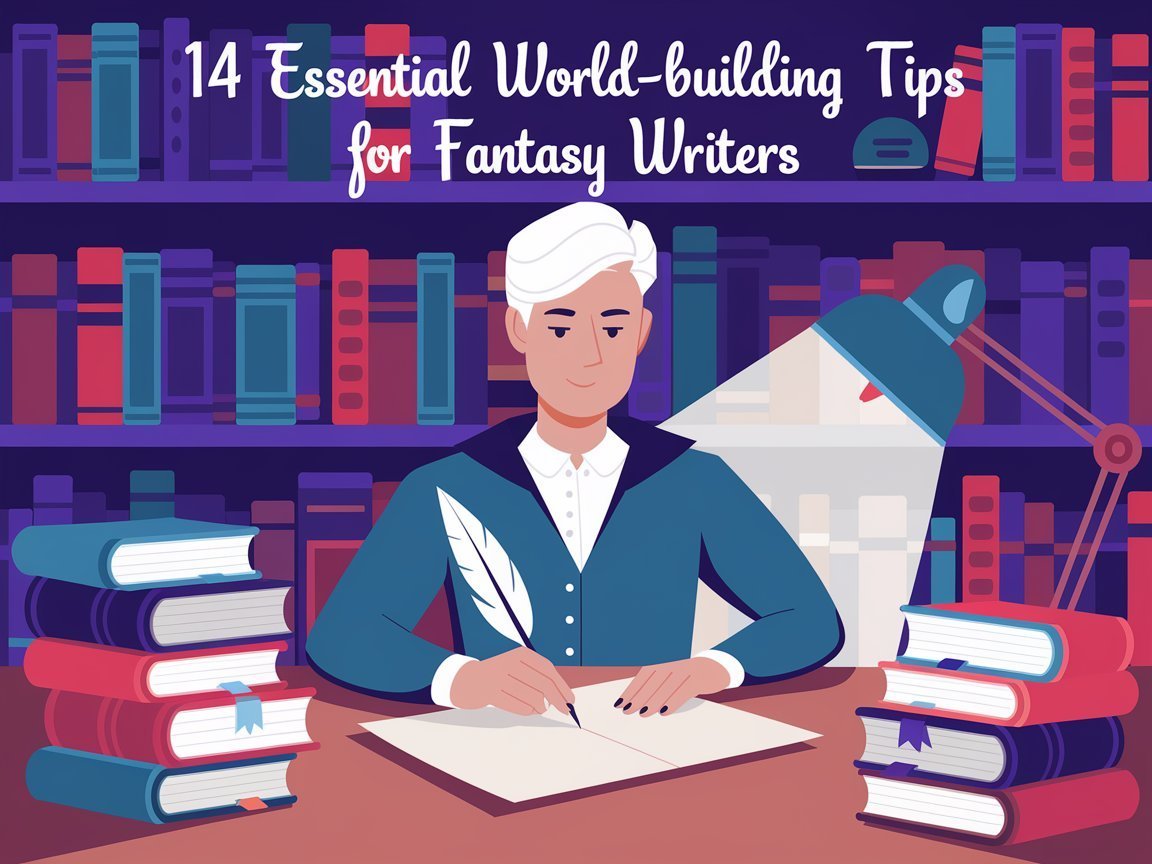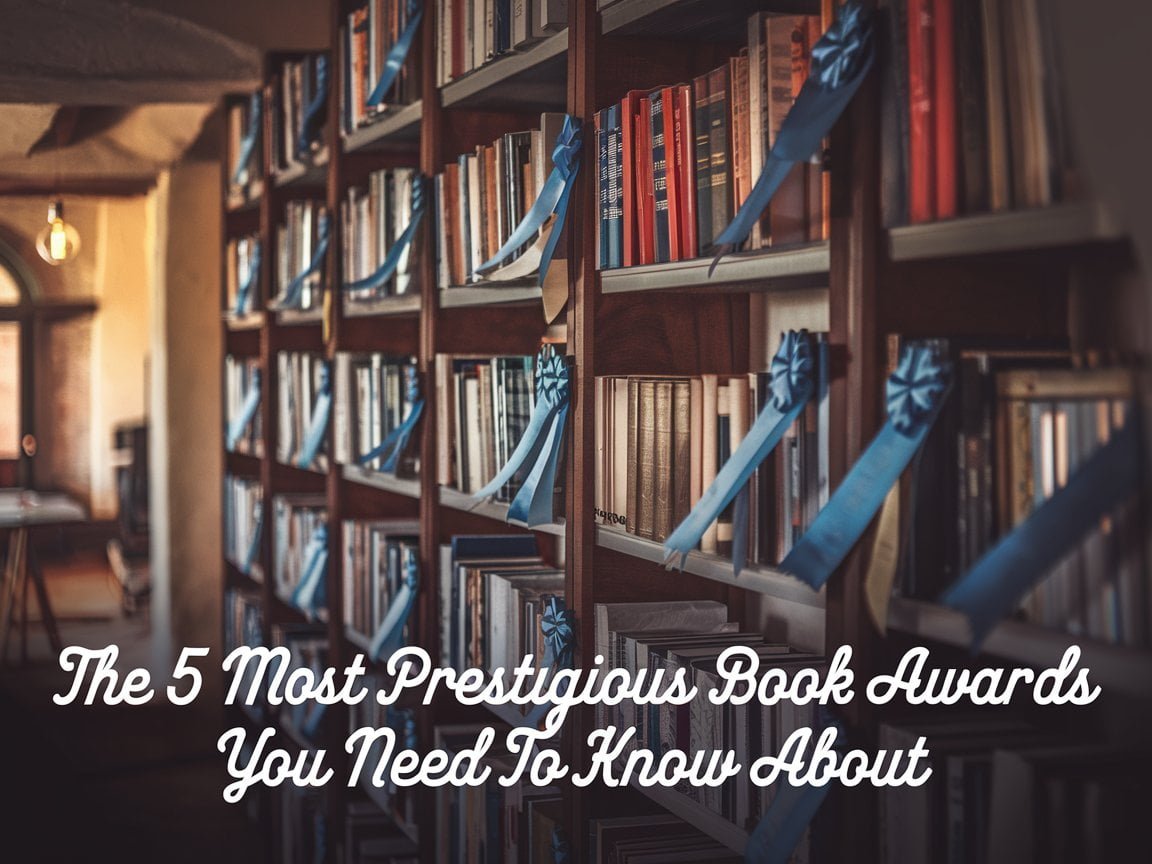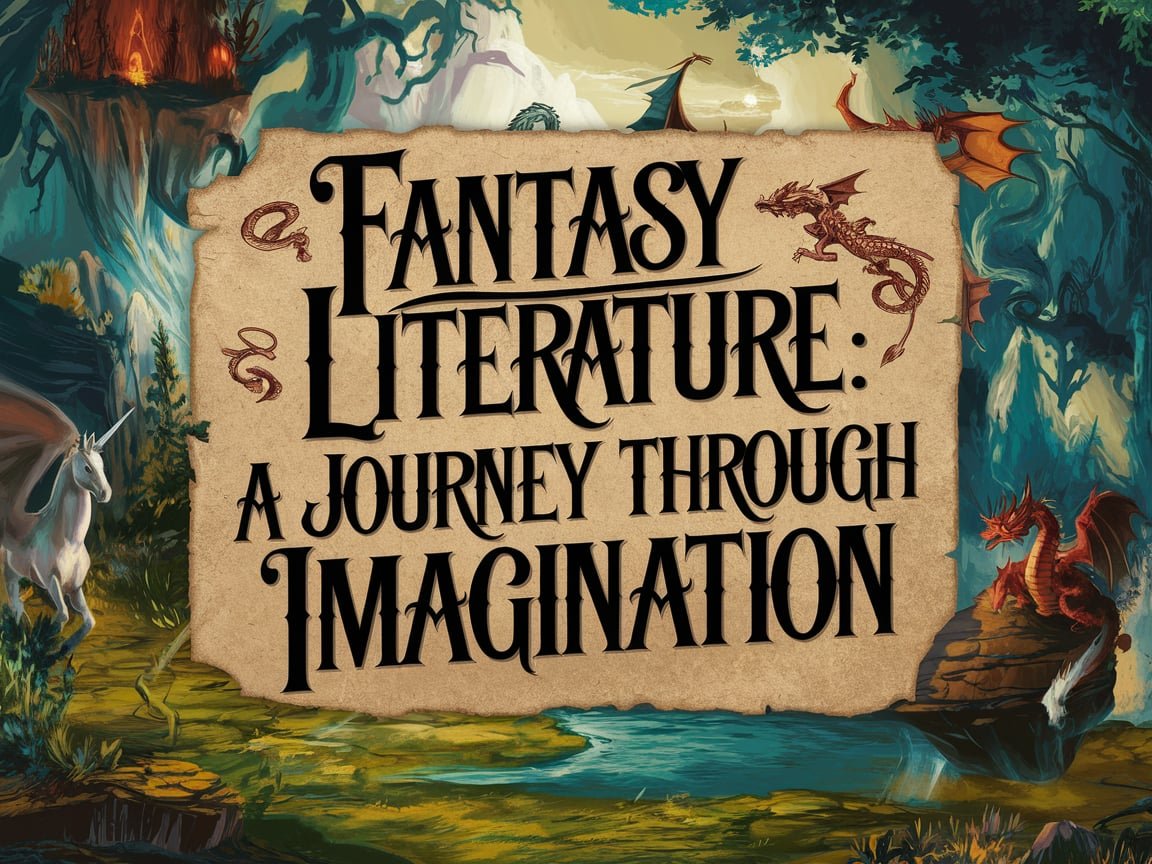As a fantasy writer, one of your most crucial tasks is world-building. The ability to create a rich, immersive, and believable universe is what sets apart great fantasy literature from the mundane. Whether you’re crafting a high fantasy realm with magic and mythical creatures or a low fantasy world with subtle supernatural elements, these essential world-building tips will help you construct a captivating backdrop for your stories.
1. Start with the Fundamentals: Geography and Climate
The physical landscape of your world forms the foundation upon which everything else is built. Consider these aspects:
- Terrain: What does the land look like? Are there vast deserts, lush forests, towering mountains, or endless plains?
- Water bodies: Where are the oceans, seas, lakes, and rivers? How do they influence trade, travel, and settlements?
- Climate zones: What are the different climates in your world? How do they affect the flora, fauna, and the people who live there?
- Natural resources: What valuable resources exist in your world? How do they shape economies and conflicts?
Remember, the geography and climate of your world should influence every other aspect of your creation, from the cultures that develop to the types of conflicts that arise.
2. Develop Diverse Cultures and Societies
With your physical world in place, it’s time to populate it with diverse and interesting cultures. Consider:
- Social structures: What forms of government exist? Are there class systems or castes?
- Belief systems: What religions or philosophies do people follow? How do these beliefs impact daily life and major events?
- Customs and traditions: What unique practices define each culture? Think about celebrations, rites of passage, and social norms.
- Languages: Do different regions or races have their languages? How do language barriers affect communication and relationships between groups?
Remember to avoid stereotypes and one-dimensional cultures. Each society should have its complexities, internal conflicts, and unique characteristics.
3. Craft a Rich History
A world without history feels flat and unrealistic. Develop a timeline of significant events that have shaped your world:
- Origin stories: How did your world come into being? What myths or legends explain its creation?
- Ancient civilizations: Were there great empires or advanced societies in the past? What happened to them?
- Major conflicts: What wars, natural disasters, or other events have left lasting impacts on the world?
- Technological or magical advancements: How have discoveries and innovations changed society over time?
Your characters don’t need to know all of this history, but it should inform the current state of your world and provide depth to your storytelling.

4. Establish the Rules of Magic (If Applicable)
If your fantasy world includes magic, it’s crucial to define its rules and limitations:
- Source of magic: Where does magical power come from? Is it innate, learned, or granted by external forces?
- Limitations: What are the costs or consequences of using magic? Are there things magic cannot do?
- Prevalence: How common is magic in your world? Is it widely accepted or feared and persecuted?
- Magical creatures: What supernatural beings exist in your world? How do they interact with the magic system and non-magical entities?
Consistency in your magic system is key to maintaining the reader’s suspension of disbelief. The rules you establish should be followed throughout your story.
5. Design Unique Flora and Fauna
The plants and animals in your world can add a layer of wonder and excitement to your story:
- Ecosystem diversity: How do different creatures adapt to various environments in your world?
- Magical creatures: If your world has supernatural beings, how do they fit into the ecosystem?
- Plant life: Are there unique plants with special properties or uses?
- Domestication: Which animals have been tamed for labor, companionship, or other purposes?
Consider how the unique flora and fauna of your world influence daily life, economy, and even warfare.
6. Create a Unique Economic System
The economy of your fantasy world can be a driving force for plot and character motivation:
- Currency: What do people use as money? Is it precious metals, gems, or something more exotic?
- Trade: How do different regions or races conduct commerce? Are there trade routes, markets, or economic alliances?
- Resources: What are the valuable commodities in your world? How does their distribution affect power dynamics?
- Technology: How advanced is the technology in different areas? How does this impact production and daily life?
Remember that economic systems can vary widely between cultures and regions in your world, adding depth and potential conflict to your story.

7. Develop Political Systems and Power Structures
Politics often plays a crucial role in fantasy narratives. Consider:
- Forms of government: Are there monarchies, democracies, theocracies, or something entirely different?
- Power dynamics: Who holds real power in each society? How is this power maintained or challenged?
- International relations: How do different nations or races interact? Are there alliances, conflicts, or isolationist policies?
- Legal systems: What laws govern your societies? How are they enforced, and what happens to those who break them?
Political intrigue can add layers of complexity to your story and provide motivations for your characters’ actions.
8. Incorporate Mythology and Legends
Myths and legends add depth and mystery to your world:
- Creation myths: How do different cultures explain the origin of the world or their people?
- Legendary figures: Are there heroes, villains, or tricksters that feature in popular stories?
- Prophecies: Are there predictions that influence current events?
- Folklore: What tales do people tell around the fire? How do these stories reflect cultural values?
These elements can foreshadow events in your main plot or provide a backstory for important characters and locations.
9. Design Unique Architecture and Settlements
The built environment of your world can be as distinctive as its natural features:
- Architectural styles: How do buildings reflect the culture, climate, and available resources of each region?
- City planning: How are settlements organized? Are there distinct districts for different social classes or professions?
- Defensive structures: What fortifications or protective measures do settlements use?
- Landmarks: What significant buildings or monuments exist? What is their historical or cultural importance?
Vivid descriptions of unique architecture can help readers visualize your world and immerse themselves in the story.

10. Establish Communication and Transportation Systems
How information and people move around your world is crucial:
- Communication methods: Do people use messengers, magic, or advanced technology to communicate over distances?
- Transportation: What are the primary modes of travel? Are there magical portals, advanced vehicles, or traditional methods like horses and ships?
- Infrastructure: Are there roads, bridges, or other structures that facilitate movement and trade?
- Information flow: How quickly does news spread? Are there systems in place for widespread education or propaganda?
These systems can greatly influence the pace of your story and the spread of important information.
11. Develop a Sense of Time and Seasons
The passage of time in your world can add rhythm to your narrative:
- Calendar system: How do people in your world measure time? Are there unique names for months or days?
- Seasons: What are the seasons like in different parts of your world? How do they affect daily life and major events?
- Celestial bodies: Are there multiple moons or suns? How do they influence tides, magic, or cultural beliefs?
- Historical eras: How do people refer to different periods in history? Are there ages named after significant events or rulers?
A well-thought-out concept of time can help ground your readers in the world and provide a framework for your narrative.
12. Create Engaging Conflicts and Tensions
Conflict drives stories, and world-building can set the stage for engaging struggles:
- Resource scarcity: Are there limited resources that different groups fight over?
- Ideological differences: What fundamental beliefs or values create tension between cultures or factions?
- Technological or magical imbalances: Do some groups have advantages that create power disparities?
- Historical grievances: Are there past events that continue to influence current relationships between groups?
These underlying tensions can provide fertile ground for both personal and large-scale conflicts in your story.
13. Maintain Internal Consistency
As you develop all these aspects of your world, it’s crucial to ensure they all fit together logically:
- Cause and effect: Make sure that elements of your world influence each other in believable ways.
- Historical continuity: Ensure that the current state of your world makes sense given its history.
- Cultural coherence: Develop cultures that feel organic and interconnected rather than a random assortment of traits.
- Technological/magical consistency: Ensure that the level of advancement in your world is consistent across different areas unless you have a good reason for discrepancies.
Consistency helps maintain the reader’s suspension of disbelief and creates a more immersive experience.
14. Leave Room for Mystery
While it’s important to have a deep understanding of your world, you don’t need to explain everything to the reader:
- Unexplored areas: Are there regions of your world that remain mysterious, even to its inhabitants?
- Lost knowledge: Is there ancient wisdom or technology that has been forgotten?
- Ongoing debates: Are there aspects of history or nature that scholars in your world disagree about?
- Gradual revelation: Consider revealing aspects of your world gradually throughout the story, maintaining a sense of discovery for the reader.
A sense of mystery can keep readers engaged and curious about your world.
Conclusion
World-building is a complex but rewarding process that forms the backbone of great fantasy writing. By carefully considering these essential elements – from the fundamental geography to the intricate web of cultures, histories, and conflicts – you can create a rich, immersive world that will captivate your readers.
Remember, the goal isn’t to create a perfect, completely realized world before you start writing. Instead, aim to develop a flexible, coherent framework that can grow and evolve as you write your story. Let your world-building enhance your narrative, not overshadow it.
With these tips in mind, you’re well-equipped to begin crafting a fantasy world that will serve as a compelling stage for your characters and their adventures. Happy world-building!





